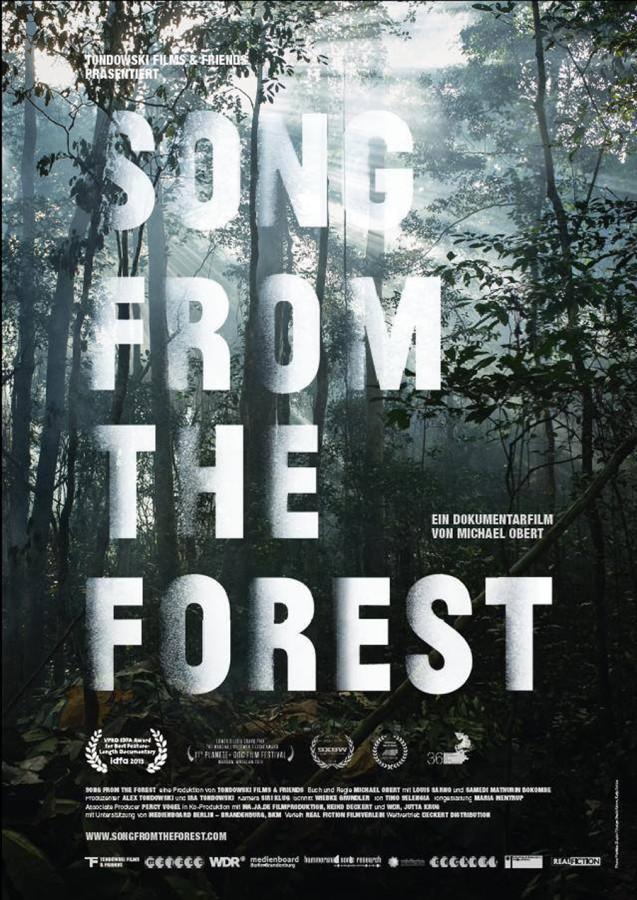Film plays audiences ‘Song from the Forest’
The theatrical poster of “Song From the Forest.”
April 13, 2015
The life of Louis Sarno, a member of the the Bayaka Pygmies, sounds like a Hollywood film on its own. “Song from the Forest,” based on the memoir of the same name, is a movie that explores Sarno’s life as part of the tribe in untouched regions of Central African rainforests. Drawn there in search of music, Sarno ultimately became a member of the tribe, which he is to this day.
Viewers enter the story as Sarno has become a guardian for the tribe, with a 13-year-old son he is preparing to bring on a trip to the United States. The film explores Sarno’s efforts to preserve the tribe’s music and Bayaka Pygmies’ fear for their future due to deforestation, the loss of culture and growing debt from a lack of tourism in the area.
The concept of cultures colliding is well worn in cinema, but “Song from the Forest” makes it feel fresh and engaging. The film has the advantage of being based on real events, allowing it to present tribe life in realistic detail. This is achieved largely through sound. The tranquil, insect-filled buzz of the rainforest and jovial tribal songs that make the transition to the city’s constant, oppressive assault effectively jarring. Sound ultimately is the film’s most successful touch.
Michael Obert, the director of “Song from the Forest,” uses small details to map this bridge between the cultures. In one instance, it is striking how practical Sarno’s son is, upset that his father continues to buy him toys instead of clothing or a real gun. Each of his families — tribal and blood-related — confront this unusual situation in different ways; his tribe simply says “he is one of us” while his blood family fails to understand his reasoning.
However, the film is a little too ambiguous, presenting fascinating discussion points but not addressing them. For instance, Sarno illustrates how long he has been in the forest by explaining that most of the original tribe members have died, leaving him with the now-grown children. Instead of dealing with Sarno’s role as a soon-to-be lone elder, protector and kind of legend in the rainforest, the film is limited to only one dialogue on
the matter.
More importantly, Sarno’s transition into the tribe is scarcely referenced. Viewers enter the film in medias res, which is effective, but only the slightest context is provided for Sarno’s search for the tribe. It is explained that he searched the world for the origins of their music, but how he assimilated into the community and how he dealt with transitioning into the tribe are never directly addressed.
Despite these shortcomings, “Song from the Forest” is still an engaging look into a unique lifestyle, depicting the return to a forgotten culture and dealing with the differences that keep that culture isolated.
A version of this article appeared in the Tuesday, April 14 print edition. Email Carter Glace at [email protected]
























































































































































